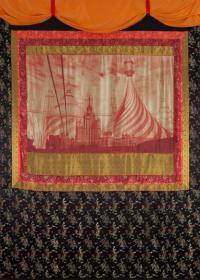The metaphysics of national-bolshevism
The term “national-bolshevism” can mean several quite different things. It emerged practically simultaneously in Russia and Germany to signify some political thinkers` guess about a national character of bolshevik revolution of 1917, hidden in orthodox Marxism internationalist phraseology. In Russian context “national-bolsheviks” was a usual name for those communists, who tried to secure the integrity of state and (either consciously or not) continued the Great Russian historical mission geo-political policy. Those Russian national-bolsheviks were both among “whites” (Ustrialov, smenovekhovtsy, left Eurasians) and among “reds” (Lenin, Stalin, Radek, Lezhnev etc.) (1). In Germany the analogous phenomenon was associated with extremely left forms of nationalism of 20s-30s, in which the ideas of non-orthodox socialism, the national idea and positive attitude to Soviet Russia were combined. Among German national-bolsheviks Ernst Niekiesch was undoubtedly the most consistent and radical, though some conservative revolutionaries may also be referred to this movement, such as Ernst Juenger, Ernst von Salamon, August Winnig, Karl Petel, Harro Schultzen-Beysen, Hans Zehrera, communists Laufenberg and Wolffheim, and even some extremely left National-socialists, such as Strasser and, within a certain period, Josef Hoebbels.

